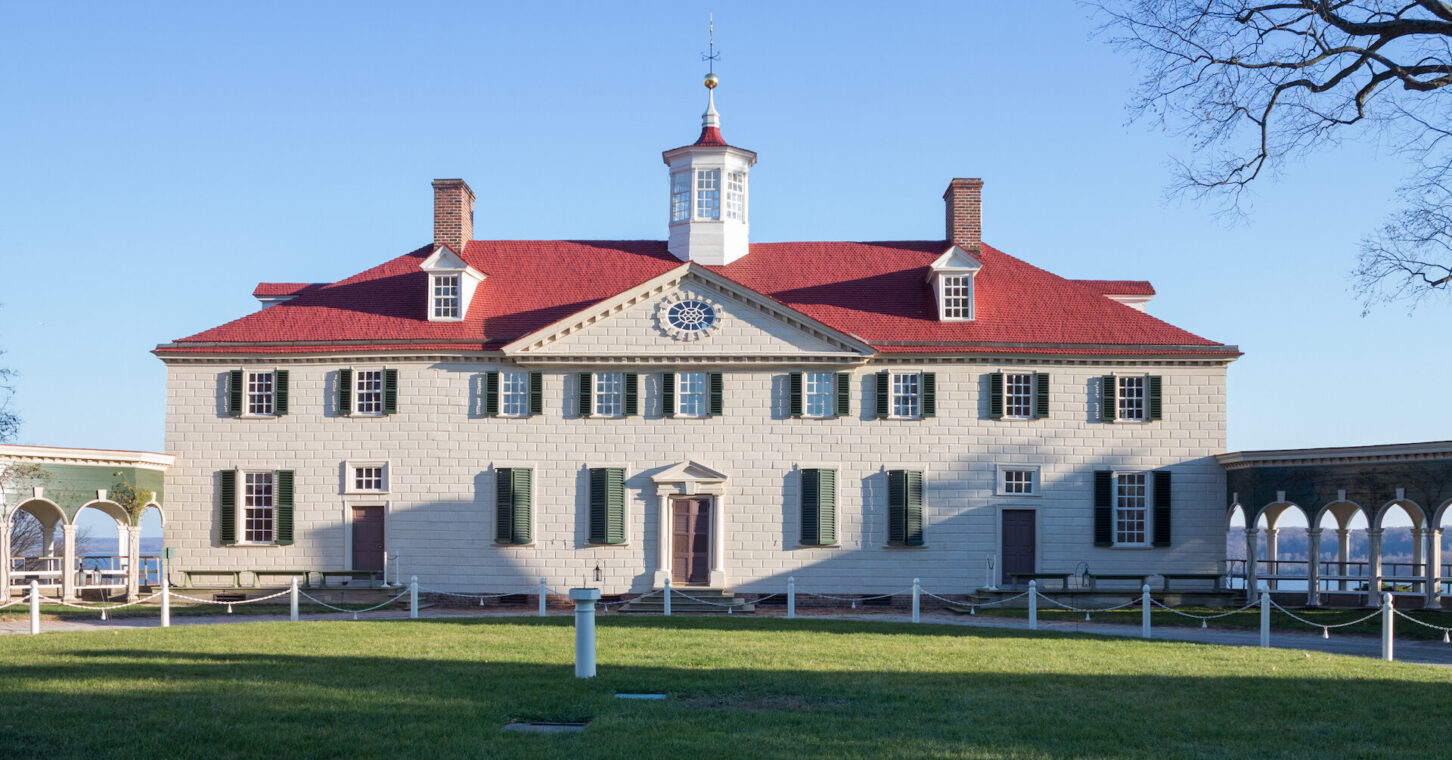
The view from one of America’s secular temples eludes capture by the lay photographer.
Gazing at the Potomac’s dark waters from George Washington’s backyard, I instinctively moved to snap a picture. The dull, flat image on the screen dissuaded me. Here was a landscape so sweeping, with such depth, that from its perspective a mighty river’s waters appeared placid. A still image could do it no justice.
How little in that view has changed since Washington’s time; I spied one cell tower in the distance. But aside from the trappings of the occasion – a lovely reception marking the 50th anniversary of the Heritage Foundation – there was little else to mark the passage of two centuries.
More than a simple romanticism beckons us to such places. Studying history is one thing. Seeing where it happened is another.
To see the faux-stone exterior of Mount Vernon – wooden siding beveled to give the appearance of stone, with sand mixed into the paint for further embellishment – is to get a sense of the lengths Washington went to fit into Virginia’s wealthy planter class. Washington was 11 when his father died, so his formal education was cut short and he actually rented his famous home from his late half-brother’s wife during his 20s.
Fake it ‘til you make it, right?
Similarly, the luxe decor of the mansion’s interior speaks to the Washingtons’ expensive tastes, despite their limited cash to pay for it. Washington’s net worth at the time of his death has been estimated at more than half a billion current-day dollars. But it was almost exclusively tied up in land and other assets, and Washington borrowed constantly to maintain his lifestyle.
Debt-laden Americans, whether “house poor” or just living above their means, can relate to at least part of that.
The lone wall of bookcases in Washington’s study, which housed many of the 900-plus volumes he accumulated, represented a respectable library in his day. Of course, such a collection shrinks in comparison to the boundless information available in ours. Still, Washington and his contemporaries didn’t need Google to know enough to draft our founding documents and shape a governing model that still functions well today, to the extent that we let it.
Knowledge is power but it isn’t all-powerful. Wisdom and principle make the difference.
The vastness of Mount Vernon’s grounds, like Thomas Jefferson’s Monticello, helps us understand not only what they risked beyond their lives in rebelling against the British crown. There’s also their agrarian perspective, their emphasis on holding land, the necessary individualism of living miles from one’s nearest neighbors. That contrasts with what one experiences visiting, say, Benjamin Franklin’s home and shop on a narrow Old Town street in Philadelphia.
America’s urban-rural divide is hardly new.
Finally, modern visitors to the likes of Mount Vernon and Monticello cannot help but acknowledge the central role slavery played in sustaining their micro and macro economies. Late in life, Washington agonized over the obvious hypocrisy of leading a revolution in the name of liberty, while denying liberty to others for his own economic benefit. He wanted a way out of the arrangement but could not conceive of one at scale. None of his successors as president brought a peaceful end to the terrible institution, either.
So, yes: The Founding Fathers were imperfect men, not gods. Maybe “demigods,” as Jefferson called those assembled in 1787 to write the Constitution. But clearly, their reach for liberty exceeded their grasp.
As does ours, sometimes. If inconsistency were enough to invalidate good deeds, the world would be a hopeless place.
“History has its eye” on certain persons acting their role in the endless human drama, as Washington’s character in the Broadway musical “Hamilton” points out. To lay eyes on those places where those persons played their part is to bring their greatness back to life in a way no book, nor amateur photo, can manage.